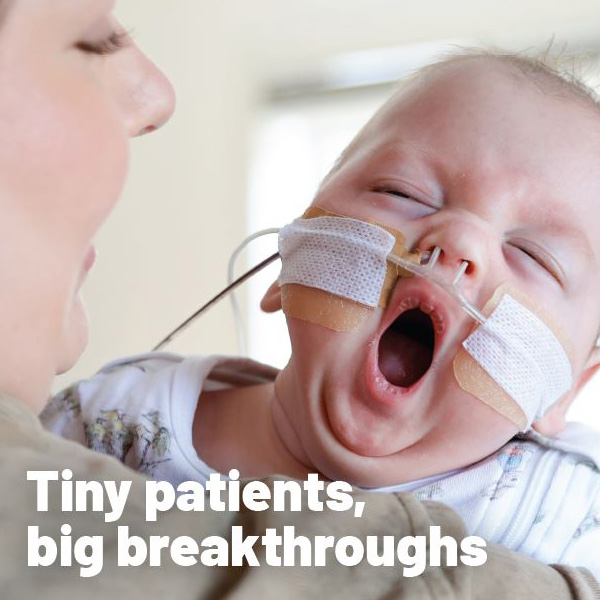Importance of donor age in treating BPD
By Rob Clancy, staff writer
An effective treatment is closer than ever for one of the most devastating conditions affecting premature babies, with researchers at Hudson Institute further refining their world-first method of treating BPD (Bronchopulmonary dysplasia).

BPD is a chronic lung disease that can have life-long health impacts; it commonly affects babies born at less than 32 weeks’ gestation. Each year in Australia, approximately 3,500 babies are born before 32 weeks.
While outcomes for these babies have improved over the past few decades, a significant percentage of them go on to develop chronic lung disease—compromising their lung structure, and making breathing difficult.
Cell therapy for treating BPD
Hudson Institute of Medical Research and Monash University were the first to use cells from the human placenta to repair the damaged lungs of premature babies, giving hope to families of the most fragile infants.
Now, thanks to the work of Associate Professor Rebecca Lim, it has been established that the gestational age of the donor is crucial to the success of this treatment.
“We have already established that amniotic epithelial cells (amnion cells) trigger endogenous repair processes by activating the adult stem cell niches and recruiting distal progenitor sites to the area of injury to aid repair.” A/Prof Lim said.
“Amnion cells are from the amniotic sac which surrounds a baby during pregnancy; they have stem cell-like properties and potent effects on inflammation and tissue damage.”
“We have now also established that the amnion cells from premature pregnancies are less beneficial than those obtained from healthy full-term pregnancies.
Life-long health impacts
The outcomes from this study give researchers their first look at how the health and gestational age of the donor can influence the quality of nanoparticles from this population of stem-like cells.
A/Prof Lim is proud of her work, published in the journal Stem Cell Research and Therapy and thankful to the philanthropists, Nigel and Cathy Garrard, who made it possible.
“We know that when BPD takes hold, there is no cure and it can cause multiple life-long health impacts,” she said.
So, to be given the opportunity to further this research means we are literally helping to change lives for the better.”
Collaborators | Dandan Zhu, Mirja Krause, Tamara Yawno, Gina Kusuma, Renate Schwab, Mehri Barabadi, Amina Maleken, Siow Chan, Rod Hunt, David Greening, Euan Wallace
Contact us
Hudson Institute communications
t: + 61 3 8572 2761
e: communications@hudson.org.au
In this article
About Hudson Institute
Hudson Institute’ s research programs deliver in three areas of medical need – inflammation, cancer, women’s and newborn health. More
Hudson News
Get the inside view on discoveries and patient stories
“Thank you Hudson Institute researchers. Your work brings such hope to all women with ovarian cancer knowing that potentially women in the future won't have to go through what we have!”





